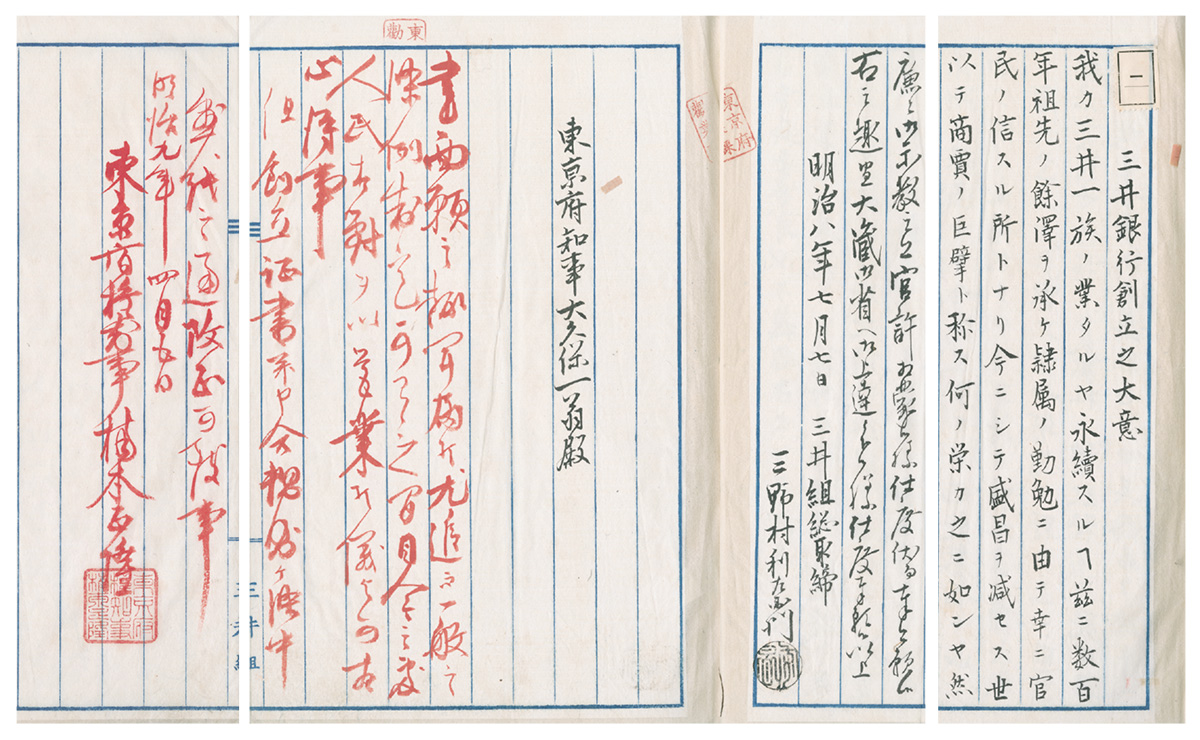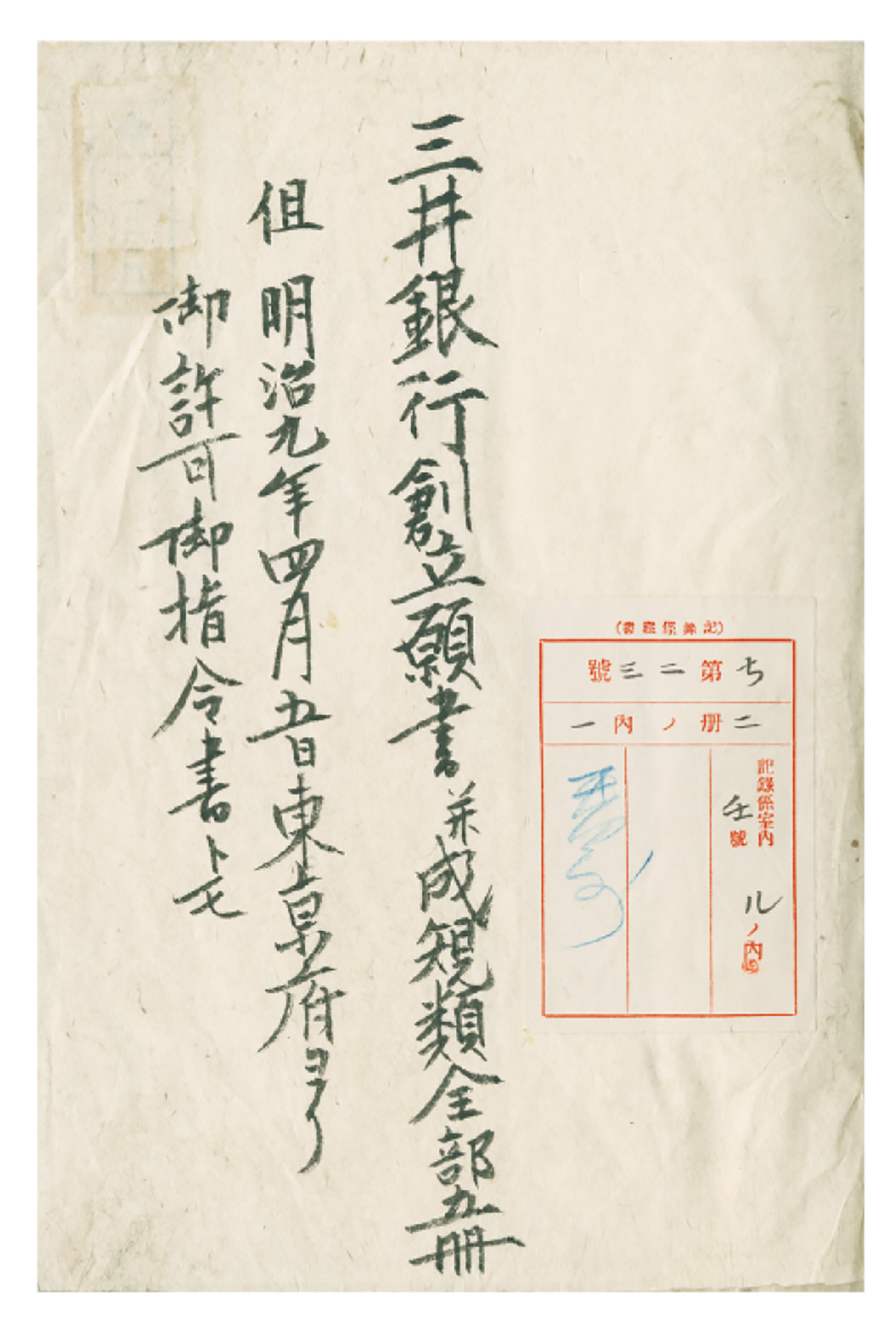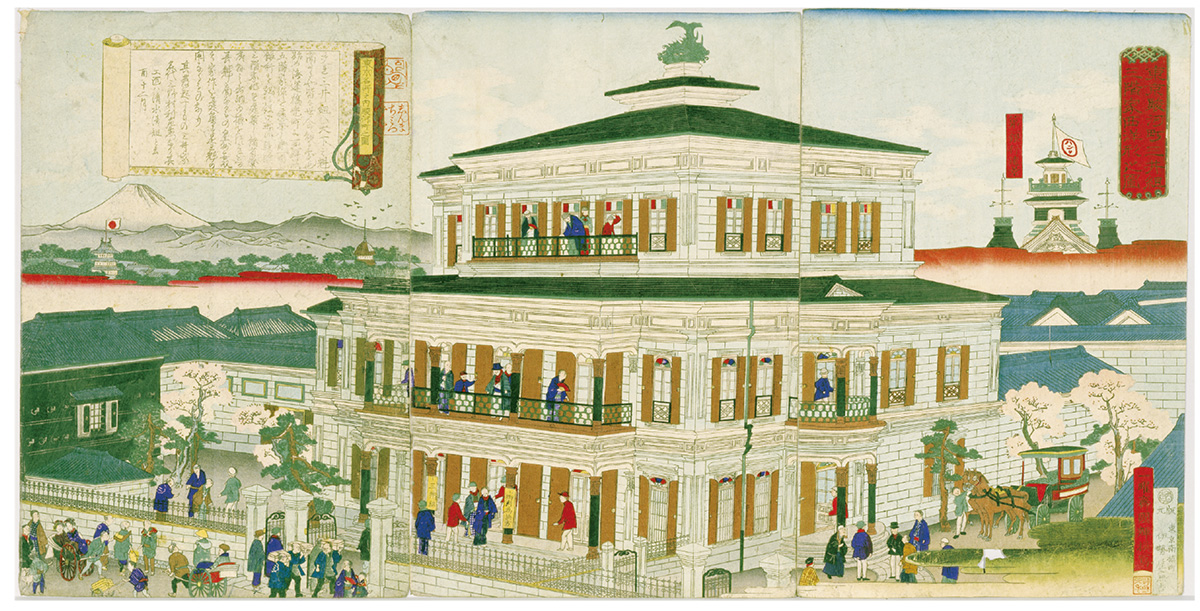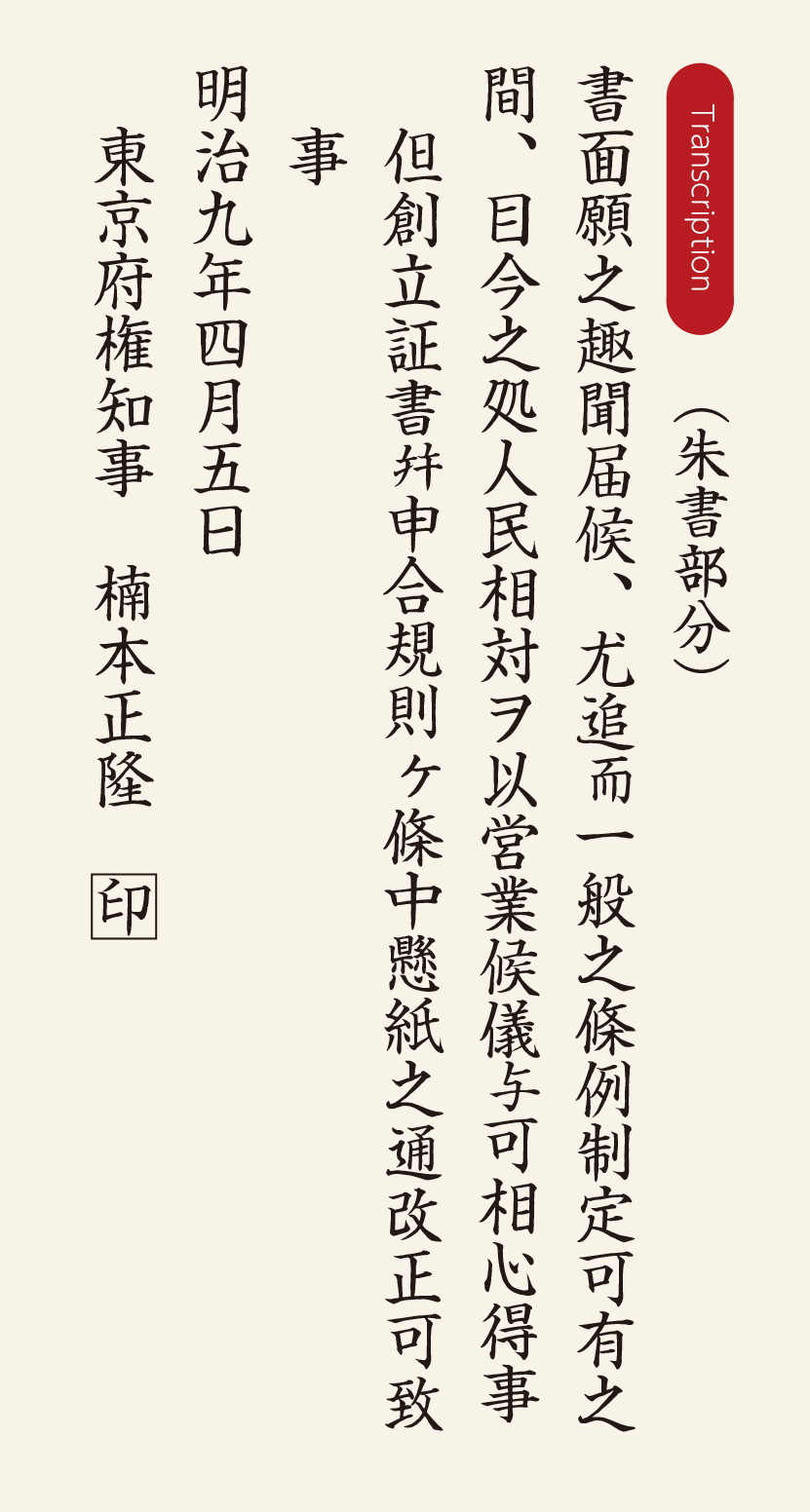28 Japan’s First Private Bank

Establishment of Mitsui Bank
In 1872, the Japanese Government established the National Bank Act (→25), modeled on the national banking system of the United States. The establishment of a large number of national banks (private banks set up in accordance with national laws) was intended to stabilize the monetary system. In fact, though, only four new banks, including the First National Bank, were opened, necessitating revisions to the Act. In the midst of this, the Mitsui-gumi, which had managed to weather the crisis brought on by the “Collateral Increase Order” (→27), applied to the then-Tokyo Prefecture for permission to establish a bank. The Ministry of Finance, which until then had forbidden the use of the “Bank” appellation by other than national banks, decided as a temporary measure until a new system could be established, to allow parties to do business based on mutual agreement between the parties involved, regardless of the law.
The Mitsui Bank’s Organization
On July 1, 1876, Mitsui Bank began business at the Mitsui-gumi House in Surugacho (→Fig. 28b) as Japan’s first private bank. The Bank took over the business of Mitsui-gumi and launched with capital of two million yen. The Mitsui-gumi Omotokata (the group’s governing body), which retained a portion of Mitsui-gumi’s assets, along with the Kita family and the other (eight) Mitsui families, invested 1 million yen and 500 thousand yen, respectively, with loans from Mitsui Bank. The remaining 500 thousand yen was raised from Mitsui-gumi employees. Serving as president was Mitsui Takayoshi (→24), head of the Kita family, but real management power was held by Minomura Rizaemon (→22), acting deputy vice-president. However, the man who led Mitsui in the early Meiji period, and who had played a key role in founding the bank, was unable to attend the opening ceremony due to cancer, and passed away in February 1877 at the age of 57. To succeed him, his adopted son, Risuke, took on the position of deputy chief. As for the bank’s officers (equivalent to bank employees), a majority of the employees of Mitsui-gumi were hired for those positions on a continuing basis. Under the Mitsui’s original system of employees (→19), these employees were live-in workers, but by the time the Bank was founded, as a rule most of them began commuting to work.
Operations at the Bank’s Opening
The primary operations of the Bank at its opening were just as before: handling of receipt and disbursement of government funds for ministries and prefectural governments. The Mitsui Bank thus took over the existing Mitsui-gumi branch offices, in addition to setting up 26 offices in Aichi, Shimonoseki, Matsusaka and other locations as well as the head office in Tokyo and branches in Osaka, Kyoto and Kobe. At its founding, the Bank handled cash receipts and disbursements for the Ministry of Foreign Affairs, Ministry of Home Affairs, Ministry of the Army, Ministry of the Navy, Ministry of Education, Ministry of Industry, Ministry of the Imperial Household, and the Hokkaido Development Commission, along with prefectural governments in Tokyo, Osaka and elsewhere. As of the end of the first half of 1880, the balance of Mitsui Bank’s deposits in government accounts accounted for 43% of its total deposits. However, the 1882 opening of the Bank of Japan made it certain that these government funds operations would shrink. This forced the Mitsui Bank to break away from its dependence on government monies, marking the start of its efforts to absorb private deposits and make the conversion to ordinary banking.

This is Mitsui Bank’s application for government authorization, submitted to Tokyo Prefecture on July 7, 1875, under the name of Minomura Rizaemon, managing director of Mitsui-gumi. The application consists of five parts: “Prospectus of Mitsui Bank,” “Company Contract of Mitsui Bank,” “Bylaws of Mitsui Bank,” “Detailed Rules of Mitsui Bank,” and “Forms,” each of which was submitted in draft form. The illustration above shows the beginning and end portions of the “Mitsui Bank Founding Overview.” Through Tokyo Prefecture, the Mitsui-gumi received a request for revisions from the Ministry of Finance, and made those revisions as instructed. It then resubmitted the application, and on May 23, 1876, received the directive authorizing establishment of the Bank.
Translation
The objective of your application is understood. As no ordinances related to private banks have been established, we will allow the bank to operate based on the mutual agreement of the parties for now, regardless of the law. Note, however, that the application is to be amended as per the revised language attached herein.
Description
Tokyo Prefecture added the directives received from the Ministry of Finance directly in red ink at the end of the application form, then returned it to Mitsui-gumi. This indicates that the progress made in preparations for the founding of the Mitsui Bank took place under transitional circumstances, when the government’s banking system was not yet fully in place.

By Utagawa Kuniteru II (1875). Construction on what was commonly known as the Surugacho Mitsui-gumi House was completed in February 1874 on the site of a former kimono store. It was designed by Shimizu Kisuke II (→25), as was the Kaiunbashi Mitsui-gumi House. With a total building area of 2,000 m2, the structure featured balconies on its front and east sides, while the roof was topped with a shachihoko (an imaginary animal installed as a charm against fire). The Kaiunbashi Mitsui-gumi House (the First National Bank) can be seen at right in the back. At the time, it was popular to depict these two quasi-Western buildings side-by-side in this manner.

